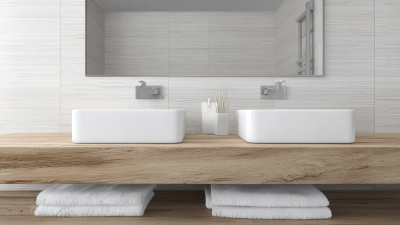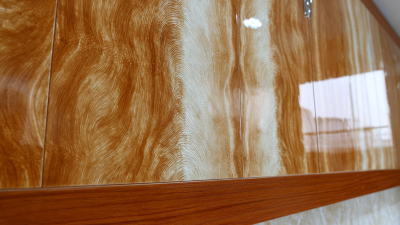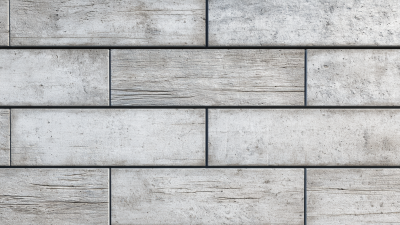
When embarking on a home renovation project, selecting the right materials can significantly influence both aesthetics and functionality. PVC wall cladding has emerged as a popular choice due to its durability, low maintenance needs, and versatility in design. According to a report by Grand View Research, the global PVC wall panels market size was valued at USD 3.54 billion in 2020 and is expected to expand at a compound annual growth rate (CAGR) of 10.5% from 2021 to 2028, highlighting its growing significance in the construction industry. Choosing the best PVC wall cladding not only enhances the visual appeal of your space but also contributes to energy efficiency and moisture resistance. With a variety of styles, colors, and textures available, understanding how to select the optimal PVC wall cladding can elevate your renovation project, ensuring it meets both your aesthetic desires and functional requirements.

When selecting the best PVC wall cladding for your home renovation, understanding the different types available on the market is crucial. PVC wall cladding is gaining popularity due to its ease of installation and low maintenance requirements, making it an ideal choice for homeowners looking to enhance their interior aesthetics. According to recent industry reports, the construction plastics market is projected to reach USD 185.54 billion by 2030, indicating a robust growth in materials like PVC that offer versatility and appealing designs.
Different types of PVC wall cladding cater to various design preferences and functional needs. From textured styles that mimic natural materials to sleek, modern panels, homeowners have a plethora of options. The trend towards innovative panel designs for 2024 highlights the increasing demand for trendy PVC wall panels that not only elevate interiors but also provide durability. Notably, the market for PVC wall coverings continues to expand, driven by consumer preferences for sustainable and cost-effective home improvement solutions. With such a broad range of choices and positive market projections, PVC wall cladding emerges as a leading solution for modern home renovations.

When selecting PVC wall cladding for your home renovation, understanding the durability and maintenance requirements of various PVC materials is crucial. PVC, known for its resistance to moisture, rot, and pests, is an excellent choice for areas prone to humidity, such as bathrooms and kitchens. High-quality PVC wall cladding can last for decades without significant wear, making it a cost-effective long-term investment. When evaluating durability, look for products with UV resistance to ensure they won't fade or warp when exposed to sunlight.
Maintenance is another essential aspect to consider. One of the primary advantages of PVC wall cladding is its low-maintenance nature; it typically requires just occasional cleaning with a mild detergent and water to keep it looking fresh. Avoid harsh chemicals and abrasive cleaners that can damage the surface. Additionally, consider the ease of installation and the availability of replacement panels if needed in the future. Selecting cladding that not only meets durability standards but also aligns with your maintenance preferences will help ensure a satisfying renovation experience.
When considering PVC wall cladding for your home renovation, one of the most exciting aspects is exploring the diverse aesthetic options available. PVC cladding comes in a wide variety of designs, textures, and colors, making it essential to choose styles that complement your existing decor and personal preferences. For instance, you might opt for a sleek, modern finish to enhance a contemporary space or a rustic wood grain pattern for a cozy, farmhouse vibe.
Tips: When selecting colors, remember that lighter shades can make a small room feel more spacious, while darker hues can add warmth and intimacy. Don't hesitate to request samples; seeing the materials in your own lighting can significantly influence your decision.
Textures also play a crucial role in the overall feel of the space. Smooth finishes add a touch of elegance, whereas embossed or 3D textures can create visual interest and depth. Consider how different surfaces reflect light, as this can dramatically alter the ambiance of the room. Experimenting with combinations of these elements can help you achieve a unique and personalized look that truly transforms your home.
| Design Style | Texture Options | Color Choices | Suitability |
|---|---|---|---|
| Modern Minimalist | Smooth | White, Gray | Contemporary homes and offices |
| Rustic Wood Effect | Textured | Brown, Beige | Cabins, country homes |
| Industrial Style | Roughened | Black, Dark Gray | Lofts, converted warehouses |
| Classic Elegance | Embossed | Cream, Gold | Traditional homes and formal areas |
| Beach House Vibe | Faux Plank | Aqua, Light Blue | Coastal homes, vacation rentals |
When planning your home renovation with
PVC wall cladding,
it is crucial to consider your
budget carefully. The cost of PVC wall cladding can vary significantly based on factors such as quality, thickness, and brand. Basic options may start as low as
$1 to $3 per square foot, while premium varieties could range from
$4 to $8 or more. It's essential to strike a balance between cost and quality to ensure long-lasting results that meet your aesthetic preferences and functional needs.
In addition to the material costs, installation expenses should also be factored into your budget. Hiring professionals for installation can add anywhere from
$2 to $5 per square foot, depending on the complexity of the job and local labor rates. If you are considering a
DIY approach, you may save on labor costs but still need to invest in tools and materials. Setting a clear budget at the outset will help guide your choices and prevent
overspending, allowing your renovation project to proceed smoothly without financial stress.
When considering the installation of PVC wall cladding for your renovation project, one of the most critical decisions is whether to tackle it as a DIY project or to hire professional services. A study from the National Kitchen & Bath Association indicates that nearly 70% of homeowners opt for professional assistance due to the complexities involved in installation, especially in moisture-prone areas like bathrooms. Professionals not only ensure that the installation is up to code but also bring experience in navigating local building regulations that are paramount for safety and compliance.

However, for the hands-on homeowner, DIY installation of PVC cladding can be a rewarding option, particularly if you have some experience in home improvement. According to a report by the Home Improvement Research Institute, around 30% of homeowners choose DIY routes to save on costs, emphasizing the importance of proper planning and tool selection. Online tutorials and resources can guide you through installation methods that can effectively match those of professionals, provided you are diligent about following instructions and considering factors such as substrate preparation and adhesive application. Ultimately, the choice between DIY and professional services will depend on your comfort level with these tasks and the specific requirements of your renovation project.






